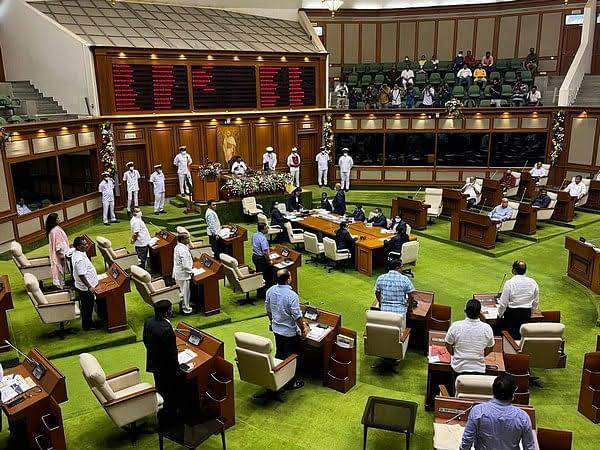The persistent public misperception that individual legislators control welfare disbursement is legally unfounded and constitutionally inaccurate

Across various legislative assemblies in India, there exists a recurring narrative wherein citizens perceive that access to public welfare schemes depends upon the personal intervention or goodwill of their elected Member of Legislative Assembly (MLA). This perception transforms welfare disbursals into transactional gestures, reducing statutory entitlements into perceived political favours. Such narratives, though popular, fail to withstand constitutional scrutiny.
The Supreme Court of India, in S. Subramaniam Balaji v. State of Tamil Nadu, (2013) 9 SCC 659, cautioned against the normalisation of political patronage, observing that the distribution of state largesse must not become an instrument for cultivating electoral support but must be governed by the principles of rule of law and transparency.
Administrative architecture
of welfare delivery
The delivery of welfare schemes in India functions within a codified administrative framework involving the Union, the States, and local self-governments. Centrally sponsored schemes such as the Pradhan Mantri Awas Yojana (PMAY), Ayushman Bharat (PMJAY), Jal Jeevan Mission, and Swachh Bharat Mission, operate through statutory guidelines and eligibility norms framed at the Union level, with financial and administrative participation by the States (Ministry of Housing and Urban Affairs, 2023; Ministry of Health and Family Welfare, 2023).
These schemes do not originate from the independent discretion of any Member of Legislative Assembly (MLA) but rather through statutory allocations and eligibility-based disbursements codified in governmental regulations.
The MLA, in this construct, functions neither as the source nor as the controller of such schemes. Instead, eligibility verification, fund allocation, and benefit distribution are executed by administrative officers governed by statutory rules and audit frameworks. In Common Cause v. Union of India, (1996) 6 SCC 530, the Supreme Court underscored that public funds are held in trust and cannot be diverted or appropriated contrary to legal mandate.
Tiers of governmental
funding
India’s federal structure divides competencies under the Constitution's Seventh Schedule between Union, State, and Concurrent Lists (The Constitution of India, 1950). In practice, most flagship welfare schemes are centrally sponsored schemes (CSS), wherein the Union Government provides a substantial portion of the funding while State Governments contribute a defined share. The administrative machinery, primarily comprising officers of the Indian Administrative Service (IAS), Indian Revenue Service (IRS), and allied cadres, oversees implementation. The role of the MLA is limited to local facilitation or constituency-specific coordination but remains legally excluded from the decision-making authority governing scheme eligibility, fund allocation, or performance evaluation (Comptroller and Auditor General, 2022).
Constitutional boundaries
of legislative office
The constitutional role of the MLA, as envisaged under Article 168 and the relevant provisions of the Constitution, is primarily legislative, deliberative, and representative. While MLAs may participate in constituency-level monitoring platforms such as the District Development Coordination and Monitoring Committees (DISHA), their participation remains advisory, without executive authority over welfare disbursal (Ministry of Rural Development, 2023).
In State of Uttar Pradesh v. Johri Mal, (2004) 4 SCC 714, the Supreme Court reaffirmed that discretionary powers of public functionaries cannot transgress statutory limitations. The MLA, therefore, is not vested with legal discretion to alter, delay, or condition the distribution of benefits lawfully accruing to eligible citizens.
Legal position on resource
allocation and equity
The notion that welfare schemes may be selectively influenced or expedited by individual legislators undermines the constitutional guarantee of equality under Article 14. In Centre for Public Interest Litigation v. Union of India, (2012) 3 SCC 1, the Supreme Court held that state largesse and public resources must be allocated in accordance with non-arbitrary, transparent, and objective criteria. Any deviation converts welfare into patronage, diluting the legitimacy of public institutions.
Furthermore, in Union of India v. Association for Democratic Reforms, (2002) 5 SCC 294, the Court reiterated that democratic governance is predicated on voter awareness, transparency, and the public’s right to know the functioning of its institutions. It is the informed citizen, rather than the obliging representative, who forms the centre of gravity in a constitutional democracy.
Clarifying the role:
Fiduciary not proprietor
The MLA occupies a fiduciary role, functioning as a conduit between the governed and the government. This role entails raising constituent grievances, recommending policy modifications, and monitoring governmental function. It does not, however, include personal custodianship over welfare resources that belong to the public exchequer.
In a democratic polity, electoral representatives serve as fiduciaries, not patrons. The consistent portrayal of Vidyanagar residents as beneficiaries of individual political largesse undermines the constitutional vision of transparent, accountable governance.
The Supreme Court in Ramana Dayaram Shetty v. International Airport Authority of India, (1979) 3 SCC 489, characterised the state as a trustee of public resources, emphasising that distribution of benefits must conform to constitutional mandates rather than political expediency.
Conclusion
The office of the MLA remains an essential component of India’s democratic architecture, designed to represent constituents legislatively and politically, but not administratively. The persistent public misperception that individual legislators control welfare disbursement is legally unfounded and constitutionally inaccurate. Welfare schemes in India arise from statutory entitlement, not political generosity. Reinforcing this constitutional truth ensures that democratic governance remains transparent, equitable, and accountable, preserving the institutional integrity envisioned by the framers of the Constitution.
Fact-checking such portrayals is not merely an exercise in accuracy but a constitutional responsibility to preserve the sanctity of participatory governance. In every constituency, the citizen remains the sovereign; public funds remain public property; and welfare remains a state obligation, not a personal favour.